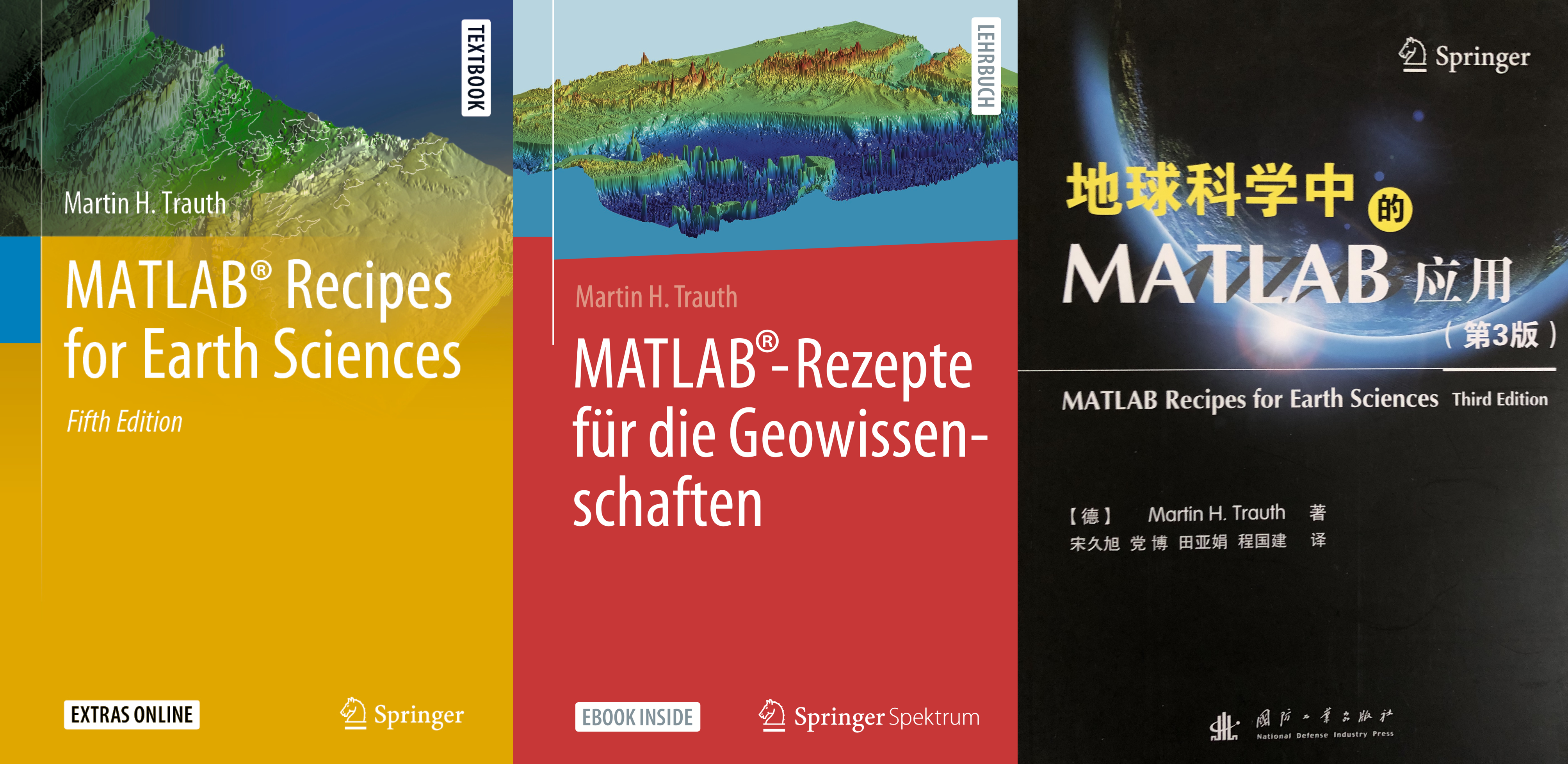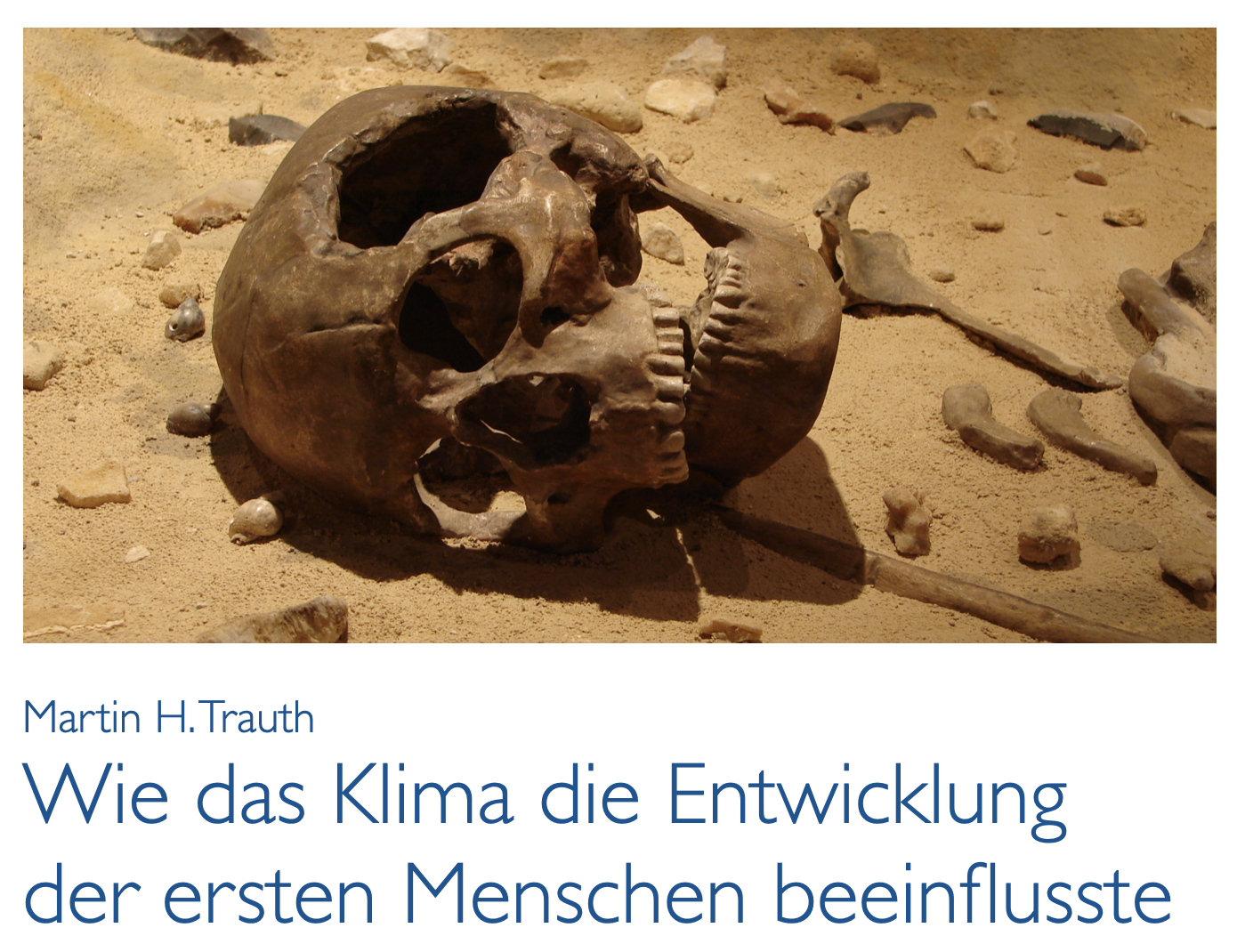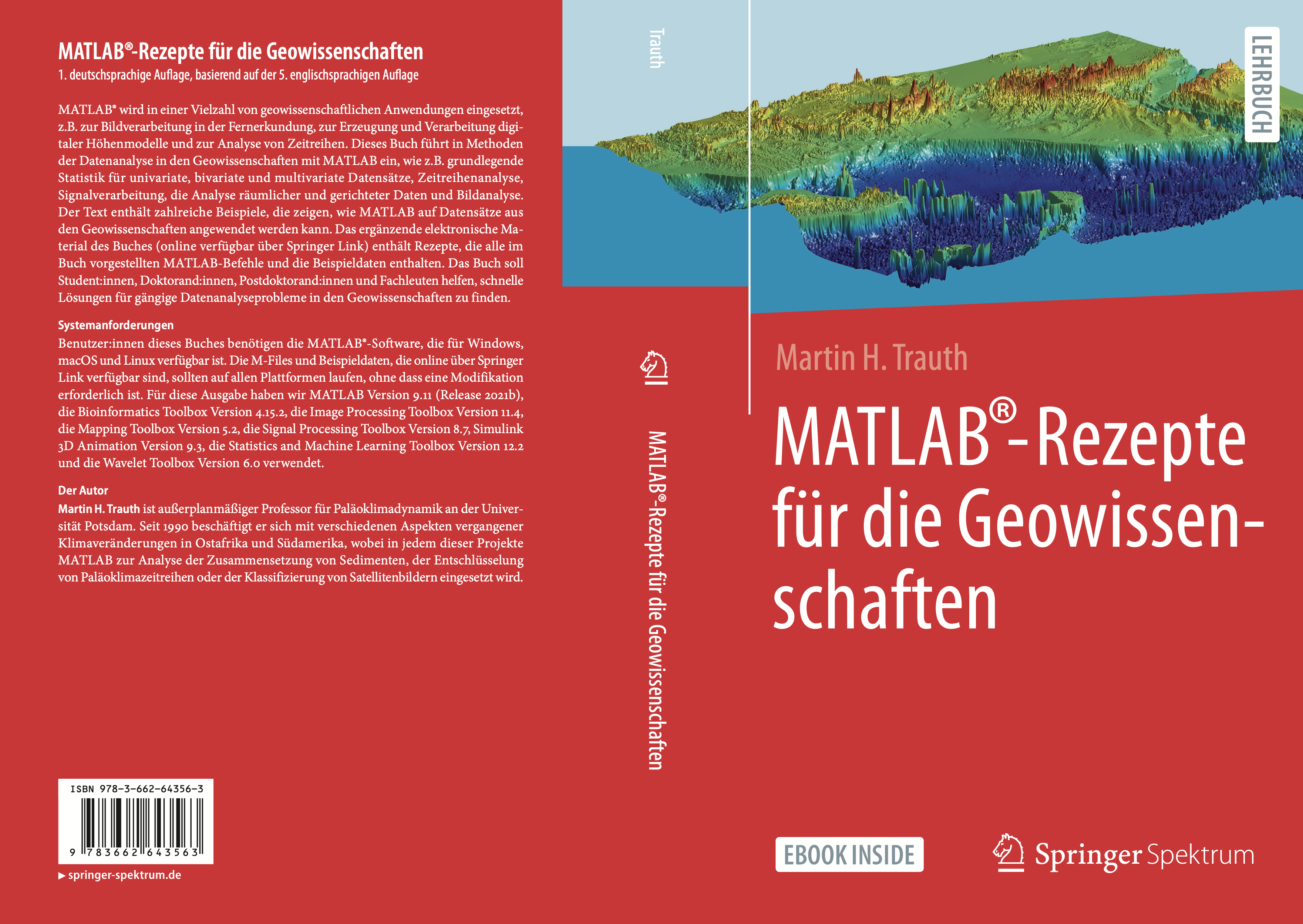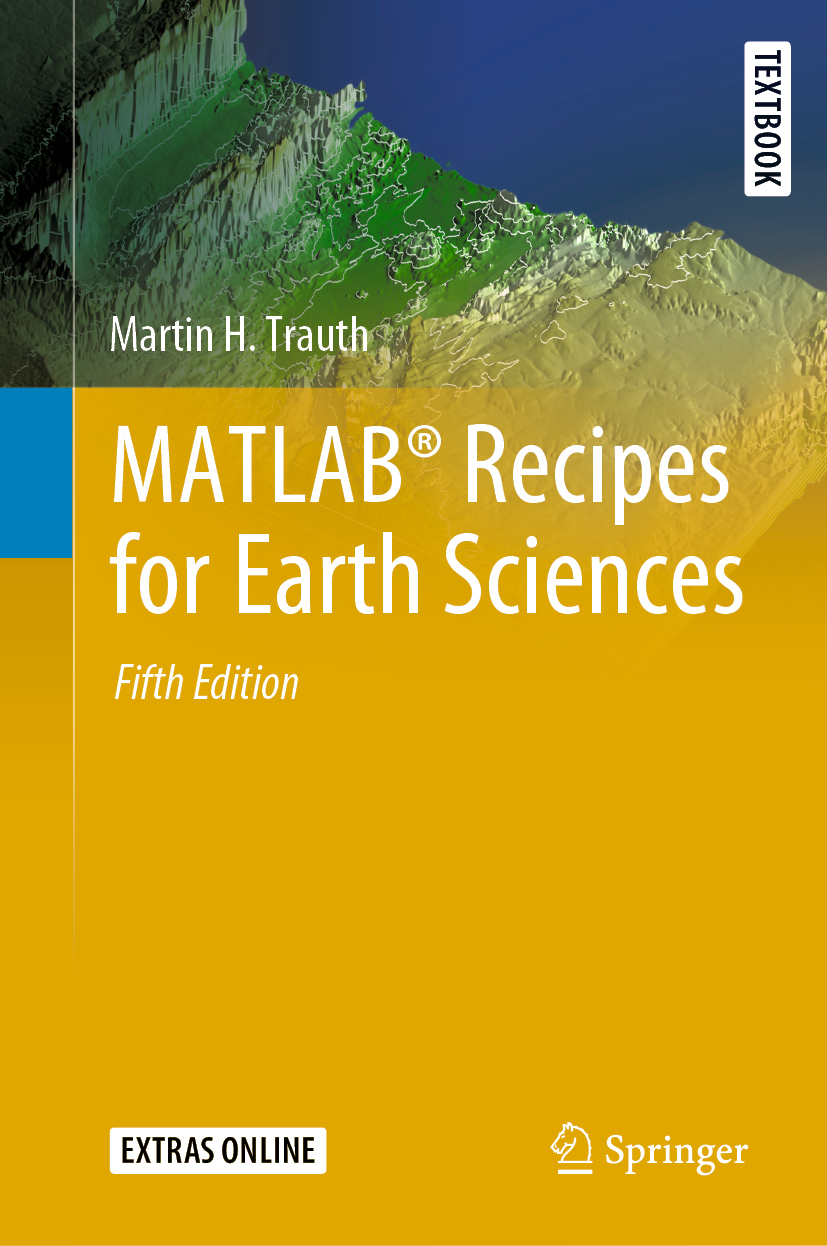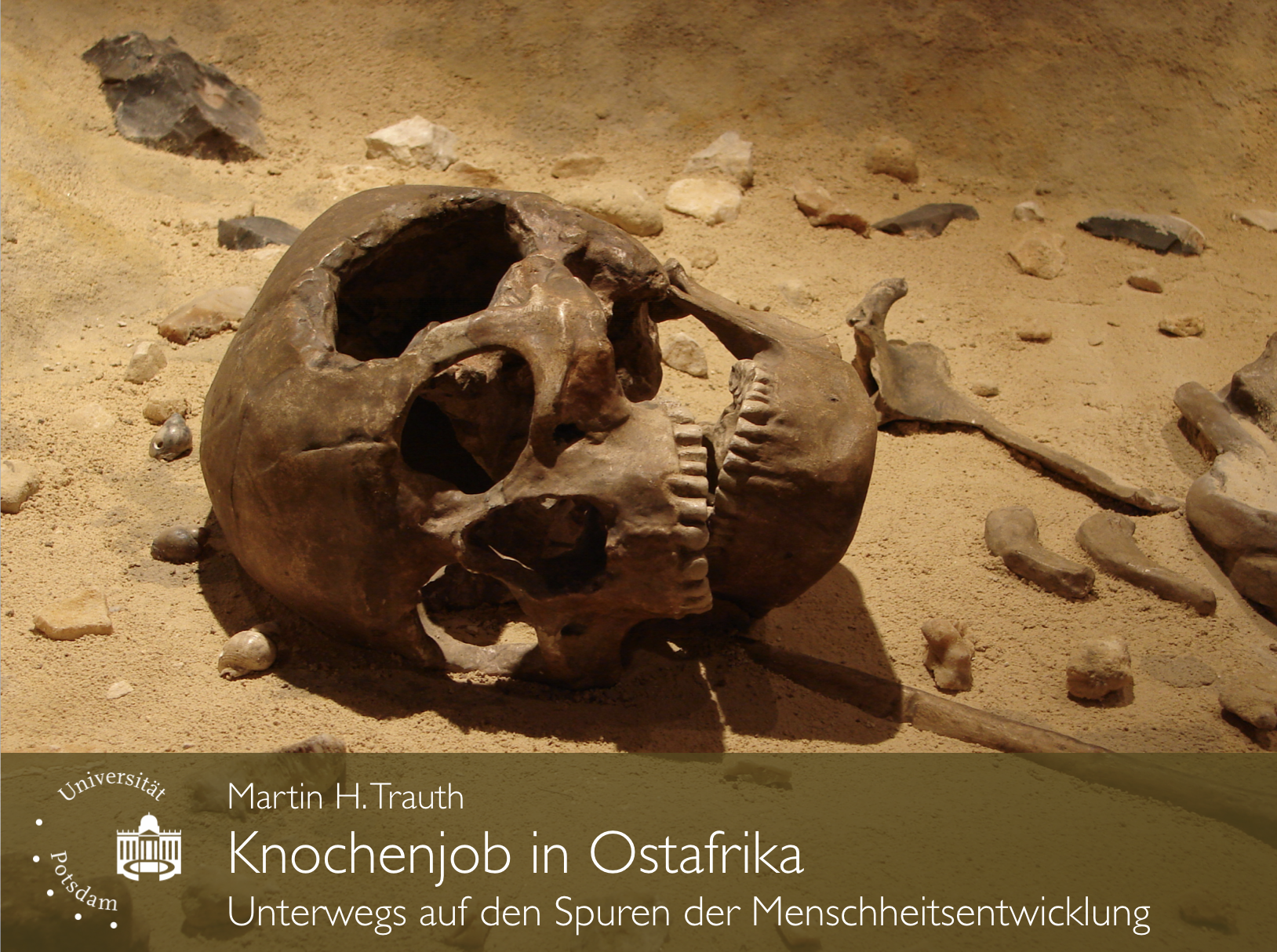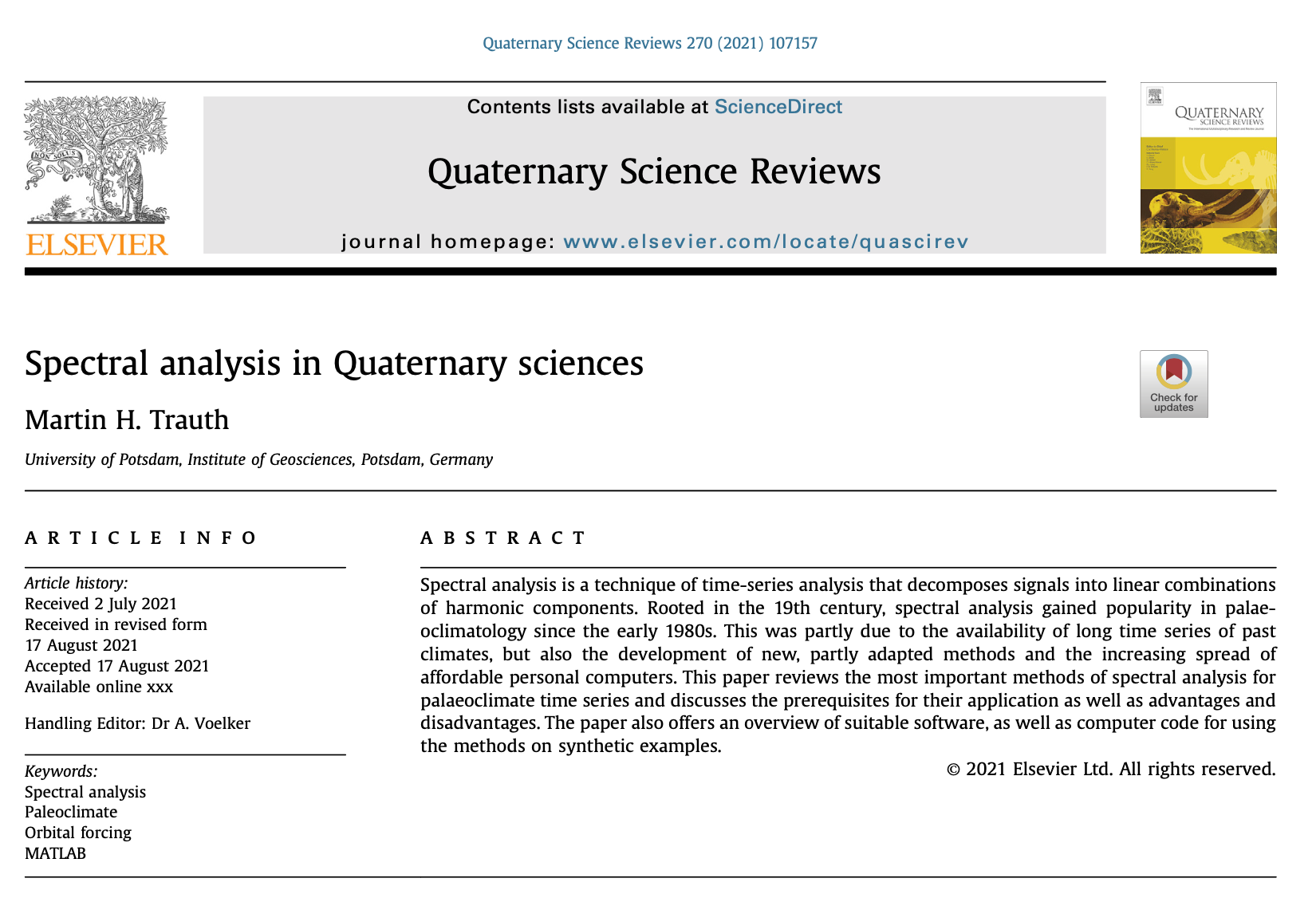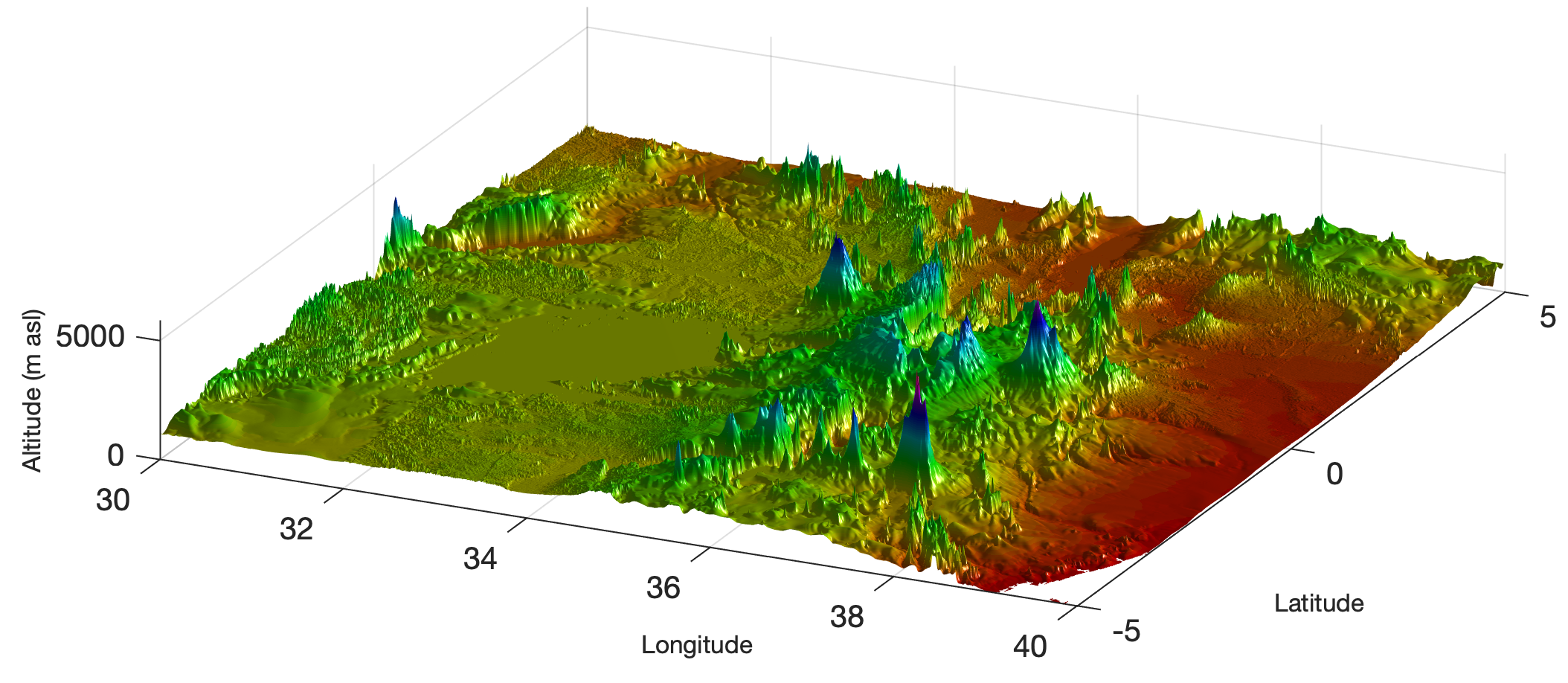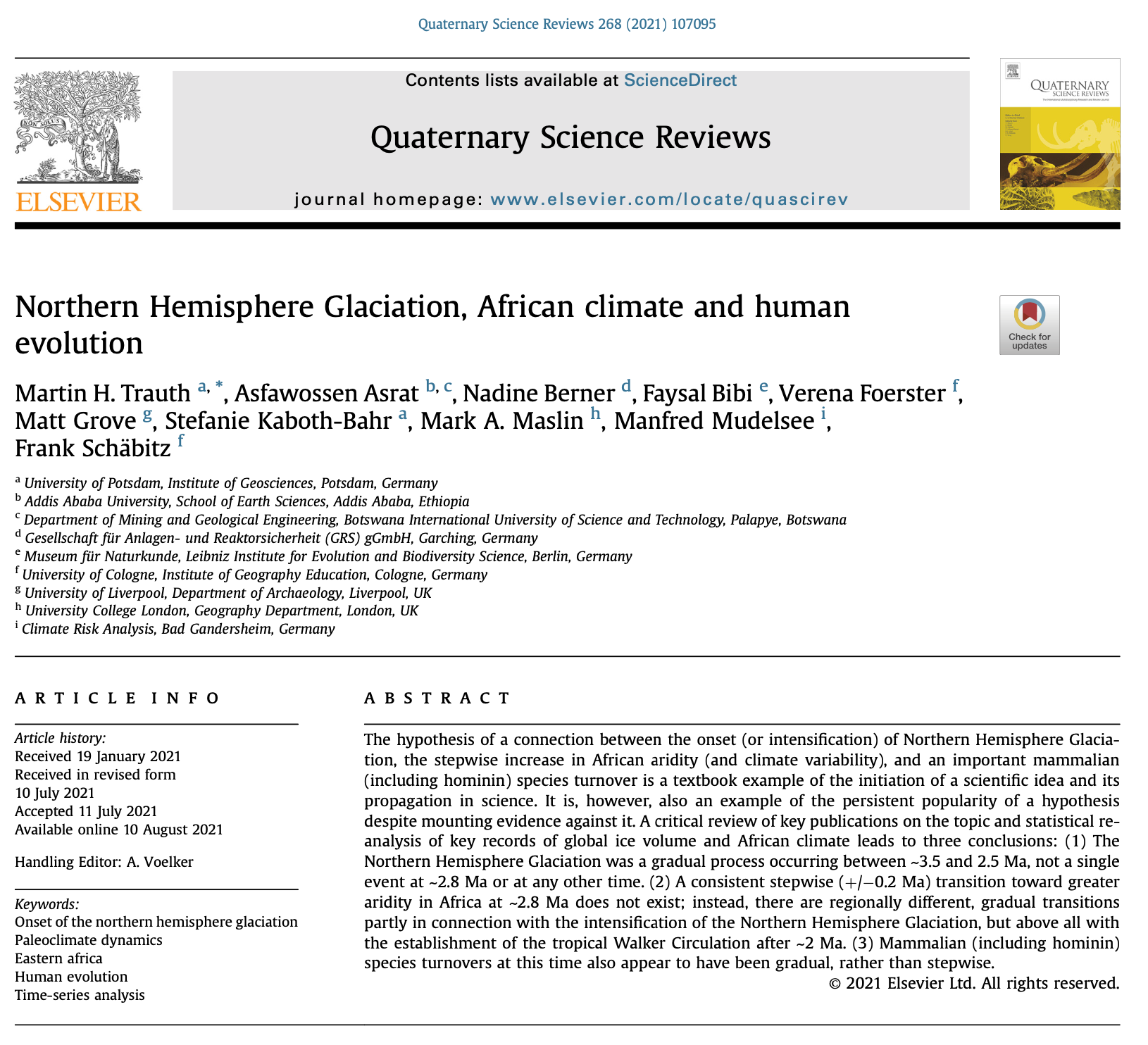In early 2022, the German translation of MATLAB Recipes for Earth Science will be published, following the original English-language edition and a Chinese translation of the 3rd edition a few years ago. Maybe it’s time for other programming languages?
Online Lecture for the Association for the Highly Gifted Child and Young People
On 20 November 2021 I will teach a lecture on “How climate influenced the evolution of early humans” for the Association for the Highly Gifted Child and Young People (DGhK Berlin-Brandenburg).
MATLAB®-Rezepte für die Geowissenschaften
The 5th edition of my textbook MATLAB Recipes for Earth Sciences will soon be available in German, corrected and updated. Continue reading “MATLAB®-Rezepte für die Geowissenschaften”
MRES Ranked 10th in Earth Sciences, Geography & Environment of Springer
The book “MATLAB Recipes for Earth Sciences” (Springer, 2021) is ranked 10th (fall 2021) in the Top 100 out of more than 4,600 books in Earth Sciences, Geography & Environment of Springer. Thanks to all readers for buying the book!
Public Online Lecture during the University of Potsdam Children’s University
On 24 September 2021 the University of Potsdam will open virtual lecture halls for 1,250 children aged 8–10 in order to inspire them for the world of science. During the event I will teach a lecture on climate change and human evolution during the Children’s University Potsdam.
MATLAB Code of “Spectral analysis in Quaternary sciences” (Trauth, QSR 2021)
Here you find the MATLAB code and data of my paper “Spectral analysis in Quaternary sciences” published in the Elsevier journal Quaternary Science Reviews. Continue reading “MATLAB Code of “Spectral analysis in Quaternary sciences” (Trauth, QSR 2021)”
The 30 Arc-Second Elevation Model GTOPO30
The Global 30 Arc-Second Elevation Data (GTOPO30) is a 30 arc second (approximately 1 km) global digital elevation data set that contains only elevation data and no bathymetry. MathWorks announced that the gtopo30 function to read the data would be discontinued and that one should use the readgeoraster function instead. Here’s the updated recipe from Chapter 7 of the MRES book (Trauth, 2021). Continue reading “The 30 Arc-Second Elevation Model GTOPO30”
MATLAB Code of “Northern Hemisphere Glaciation …” (Trauth et al., QSR 2021)
Here you find the MATLAB code and data of our paper “Northern Hemisphere Glaciation, African Climate and Human Evolution” published in the Elsevier journal Quaternary Science Reviews.
Continue reading “MATLAB Code of “Northern Hemisphere Glaciation …” (Trauth et al., QSR 2021)”

